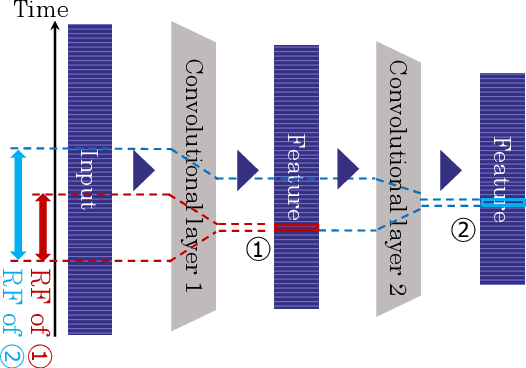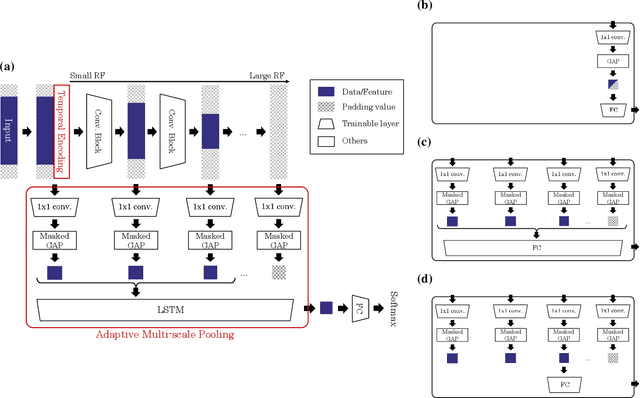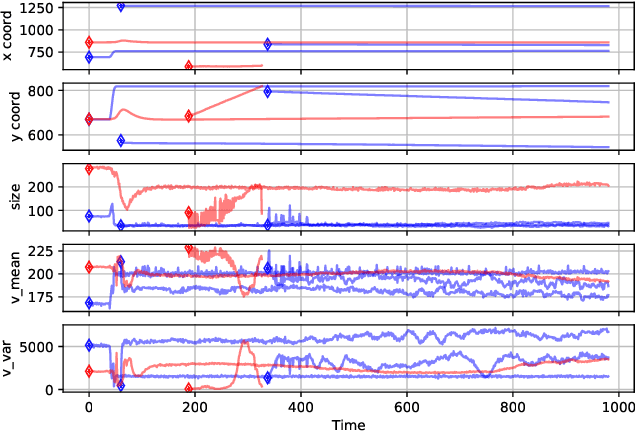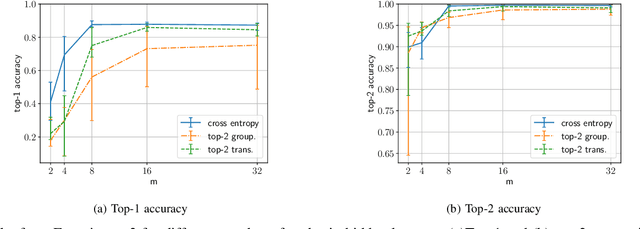Azusa Sawada
Convolutional Neural Networks for Time-dependent Classification of Variable-length Time Series
Jul 13, 2022



Abstract:Time series data are often obtained only within a limited time range due to interruptions during observation process. To classify such partial time series, we need to account for 1) the variable-length data drawn from 2) different timestamps. To address the first problem, existing convolutional neural networks use global pooling after convolutional layers to cancel the length differences. This architecture suffers from the trade-off between incorporating entire temporal correlations in long data and avoiding feature collapse for short data. To resolve this tradeoff, we propose Adaptive Multi-scale Pooling, which aggregates features from an adaptive number of layers, i.e., only the first few layers for short data and more layers for long data. Furthermore, to address the second problem, we introduce Temporal Encoding, which embeds the observation timestamps into the intermediate features. Experiments on our private dataset and the UCR/UEA time series archive show that our modules improve classification accuracy especially on short data obtained as partial time series.
Trade-offs in Top-k Classification Accuracies on Losses for Deep Learning
Jul 30, 2020



Abstract:This paper presents an experimental analysis about trade-offs in top-k classification accuracies on losses for deep leaning and proposal of a novel top-k loss. Commonly-used cross entropy (CE) is not guaranteed to optimize top-k prediction without infinite training data and model complexities. The objective is to clarify when CE sacrifices top-k accuracies to optimize top-1 prediction, and to design loss that improve top-k accuracy under such conditions. Our novel loss is basically CE modified by grouping temporal top-k classes as a single class. To obtain a robust decision boundary, we introduce an adaptive transition from normal CE to our loss, and thus call it top-k transition loss. It is demonstrated that CE is not always the best choice to learn top-k prediction in our experiments. First, we explore trade-offs between top-1 and top-k (=2) accuracies on synthetic datasets, and find a failure of CE in optimizing top-k prediction when we have complex data distribution for a given model to represent optimal top-1 prediction. Second, we compare top-k accuracies on CIFAR-100 dataset targeting top-5 prediction in deep learning. While CE performs the best in top-1 accuracy, in top-5 accuracy our loss performs better than CE except using one experimental setup. Moreover, our loss has been found to provide better top-k accuracies compared to CE at k larger than 10. As a result, a ResNet18 model trained with our loss reaches 99 % accuracy with k=25 candidates, which is a smaller candidate number than that of CE by 8.
 Add to Chrome
Add to Chrome Add to Firefox
Add to Firefox Add to Edge
Add to Edge